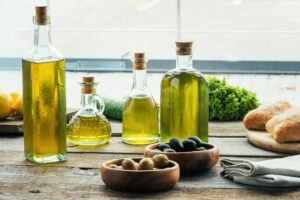 Omega-3 fatty acids have many health benefits, but they can only be obtained from certain foods. For example, it is recommended to eat more flax, chia, and soybean seeds.
Omega-3 fatty acids have many health benefits, but they can only be obtained from certain foods. For example, it is recommended to eat more flax, chia, and soybean seeds.
Fatty fish, including salmon, sardines, and tuna, are the best-known sources of Omega-3. However, you can also get this from other foods. There are several foods that can provide the body with the required amount of fatty acids.
Omega-3 has many functions:
- Fatty acids play an important role in the development and functioning of the brain. That is why it is believed that they are closely related to the learning process and significantly affect the success of information assimilation.
- These nutrients reduce the likelihood of developing heart disease.
- Omega-3 fatty acids are excellent at reducing inflammation.
- They effectively reduce the risk of developing chronic diseases.
Why is Omega-3 good for your health?
1. Omega-3 regulates cholesterol level
First, it is worth noting that not all cholesterol is harmful to health. It can have a positive effect on the heart. For example, a reduction in blood triglyceride (fat) levels has been found among Eskimo tribes who eat a lot of fish.
2. Regulates blood pressure
Many clinical studies support the relationship between the consumption of Omega-3 fatty acids and lower blood pressure.
But, in any case, it is important to remember that only a doctor can make an accurate diagnosis and give treatment instructions. A proper diet is only a supplement that promotes recovery.
Other foods that contain Omega-3:
1. Flax seeds
Flax seeds contain a lot of Omega-3 acids. According to estimates, for every 100g of flax, there are 20g of these acids. This fantastic indicator will help you get the minimum daily dose needed by the body.
2. Chia seeds
This seed has a lot of Omega-3. The concentration is similar to flax seeds – 20%. Chia seeds have many culinary uses, for example, they can be added to desserts.
3. Soy
Soy is a special legume food because it contains healthy fats. In this case, for every 100 grams of soy, there are approximately 11 grams of Omega-3.
You can prepare many different dishes with soy. Plus, it’s a great option for vegetarians.
4. Walnut oil
It is a delicious ingredient for dressing salads or making desserts. Walnut oil also has a high content of Omega-3 fatty acids (10g per 100g). In addition, this oil relieves inflammation.
5. Peanut butter
Peanut butter is considered healthier than milk butter. Therefore, you can use it as a substitute without hesitation. You can even eat it on its own. 100 grams of peanut butter contains 10 grams of Omega-3.
6. Canola oil
This oil can be used in many different ways in the kitchen. In particular, it is well suited for quick frying and baking. Omega-3 concentration: 9g per 100g.
7. Olive oil
Olive oil goes well with almost all foods. It is not recommended for frying, but it has many other culinary uses. By properly balancing the amount of olive oil in your diet, you can improve your daily allowance of fatty acids.
8. Cabbage
Cabbage tastes very good in salads. It contains a lot of Omega-3, vitamins, and minerals, which will significantly improve your health and well-being.
9. Shea oil
This product is obtained from the nuts of the African tree. It has a high concentration of fatty acids useful for the body, in particular Omega-3.
Picture Credit: VistaCreate
